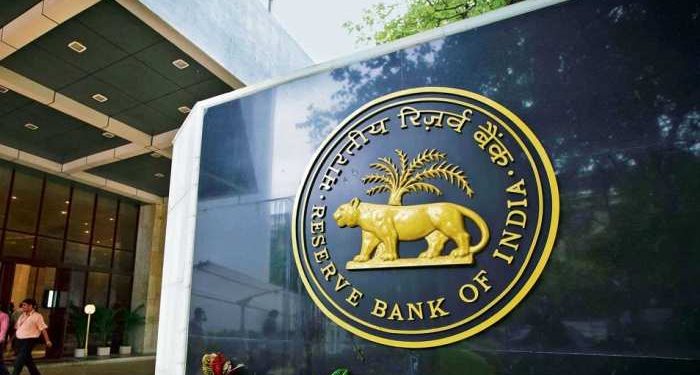Mumbai: The Reserve Bank Tuesday said that India’s growth momentum is likely to continue in 2023-24 even as it made a case for pushing structural reforms to deal with the geopolitical developments and also to achieve sustained growth in the medium term.
The Reserve Bank’s annual report flagged slowing global growth, protracted geopolitical tensions and a possible upsurge in financial market volatility as possible downside risks to growth.
The report notes that volatility has ebbed in global financial markets and risks to financial stability from the failure of banks in some advanced economies (AEs) in March 2023 have eased. Resolute policy actions have stemmed the tide of confidence runs for now.
“Amidst strong global headwinds, the Indian economy is expected to have recorded a growth of 7.0 per cent in real GDP in 2022-23,” it said.
A sustained recovery in discretionary spending, particularly in contact intensive services, restoration of consumer confidence, high festival season spending after two consecutive years of COVID-19 induced isolation and the government’s thrust on capex provided impetus to the growth momentum.
In the second half of the year, however, the pace of year-on-year growth moderated because of unfavourable base effects, weakening private consumption demand caused by high inflation, slowdown in export growth and sustained input cost pressures, it said.
“On the back of sound macroeconomic policies, softer commodity prices, a robust financial sector, a healthy corporate sector, continued fiscal policy thrust on quality of government expenditure, and new growth opportunities stemming from global realignment of supply chains, India’s growth momentum is likely to be sustained in 2023-24 in an atmosphere of easing inflationary pressures,” the report said.
Slowing global growth, protracted geopolitical tensions and a possible upsurge in financial market volatility following new stress events in the global financial system, however, could pose downside risks to growth.
“It is important, therefore, to sustain structural reforms to improve India’s medium-term growth potential,” the 311-page report said.
The RBI also said the conduct of monetary policy will continue to be guided by the objective of achieving the medium-term target for Consumer Price Index (CPI) inflation of 4 per cent within a band of +/- 2 per cent, while supporting growth.
The Reserve Bank said it will undertake liquidity management operations in sync with the monetary policy stance and taking into account the needs of the productive sectors of the economy.
During 2023-24, the report said the Reserve Bank aims at expanding the ongoing pilots in CBDC-Retail and CBDC-Wholesale by incorporating various use cases and features.
“The pilot in CBDC-Retail is proposed to be expanded to more locations and to include more participating banks,” the report said.
The value of e-Rupee-Wholesale and e-Rupee-Retail in circulation stood at Rs 10.69 crore and Rs 5.70 crore, respectively, as March 31, 2023.
On currency in circulation, it said the value and volume of banknotes in circulation increased by 7.8 per cent and 4.4 per cent, respectively, during 2022-23 as compared with 9.9 per cent and 5 per cent, respectively, in 2021-22.
In value terms, the share of Rs 500 and Rs 2,000 banknotes together accounted for 87.9 per cent of the total value of banknotes in circulation as March 31, 2023, as compared to 87.1 per cent a year ago.
The Reserve Bank has announced withdrawal of Rs 2,000 notes, and holders of the highest value currency have been given time till September 30 to exchange or deposit them.
“In volume terms, Rs 500 denomination constituted the highest share at 37.9 per cent, followed by Rs 10 denomination banknotes which constituted 19.2 per cent of the total banknotes in circulation as on March 31, 2023,” it said.
There were 5,16,338 lakh pieces of Rs 500 denomination notes totalling Rs 25,81,690 crore at end-March 2023. The number of Rs 500 notes at end-March 2022 were 4,55,468 lakh.
The report also said there were 4,55,468 lakh pieces of Rs 2,000 notes amounting to Rs 3,62,220 crore at end-March.
In volume terms, the Rs 2,000 notes in circulation declined to 1.3 per cent of total currency in circulation at end-March 2023 compared to 1.6 per cent in the year-ago period. In value terms, it too declined to 10.8 per cent from 13.8 per cent at end-March 2022.
The report further said that compared to 2021-22, there was an increase of 8.4 per cent and 14.4 per cent in the counterfeit notes detected in the denominations of Rs 20 and Rs 500 (new design), respectively.
The counterfeit notes detected in the denominations of Rs 10, Rs 100 and Rs 2,000 declined by 11.6 per cent, 14.7 per cent and 27.9 per cent, respectively.
The indent and supply of banknotes by BRBNMPL and SPMCIL stood at 2,26,000 lakh and 2,26,002 lakh pieces, respectively.
The total expenditure incurred on security printing during 2022-23 was Rs 4,682.80 crore as against Rs 4,984.80 crore in the previous year.
The RBI also disposed of 4,824 lakh pieces of soiled Rs 2,000 notes in the last fiscal, up from 3,847 pieces in the preceding year.
PTI






































